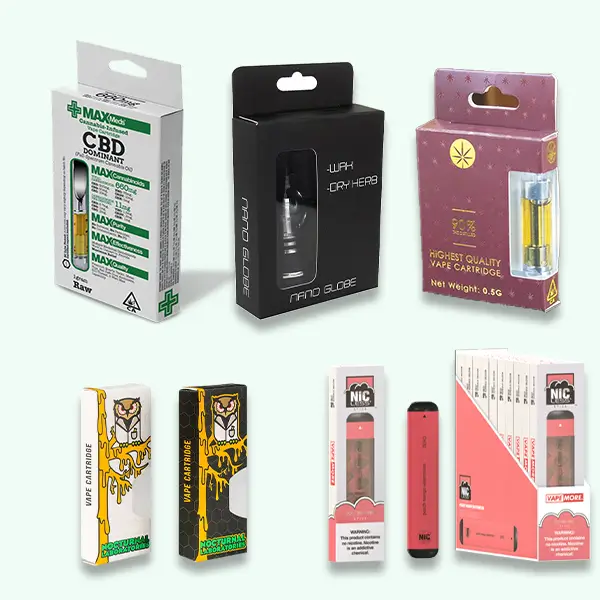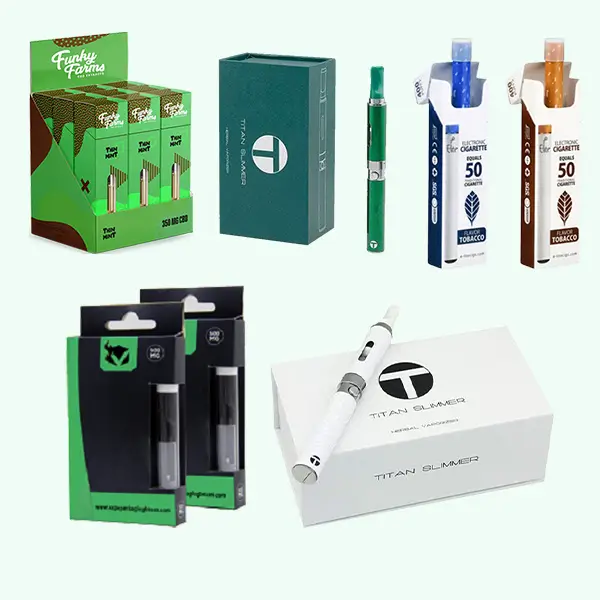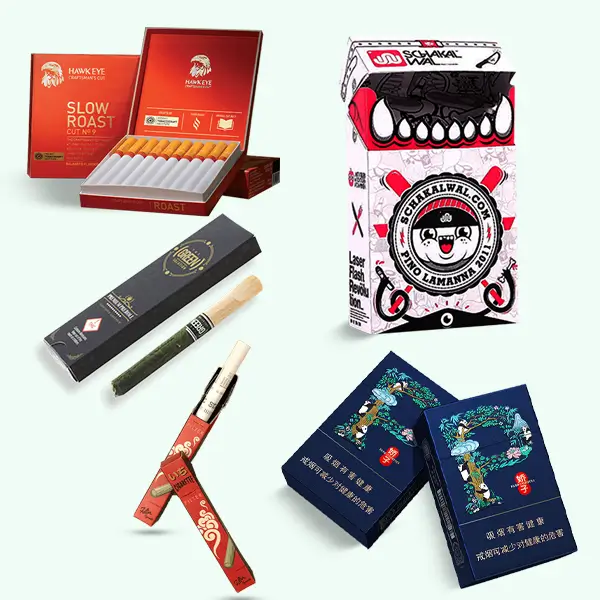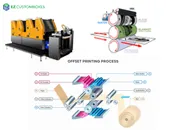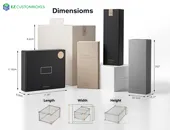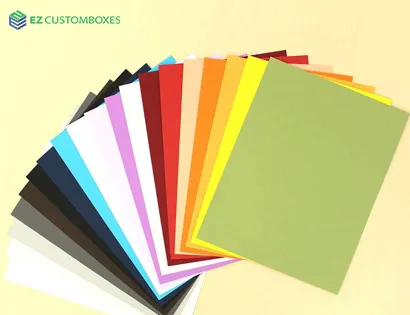Have you ever picked up a cigarette pack and wondered why it contains 20 cigarettes? Or noticed how some countries sell packs of 10, 25, or even 30 cigarettes? Cigarette pack sizes may look simple, but they reflect decades of tobacco regulation, consumer behavior, and industry strategy.
The number of cigarettes in a pack isn’t just about personal choice — it’s a carefully standardized figure shaped by global tobacco laws, marketing tactics, cultural preferences, and pricing models.
In this comprehensive guide, we’ll explore everything from the evolution of cigarette packaging to why 20 cigarettes per pack has become the standard in most markets. We’ll break down different cigarette pack sizes used around the world, explain how cartons and bulk packaging work, and discuss pricing, branding, and regulation.
By the end of this article, you’ll have a full understanding of why cigarette packs are designed the way they are — and how something as small as a pack size can influence entire markets.
The Evolution of Cigarette Packaging
The Early Years
In the early 1900s, cigarettes were far from the sleek flip-top boxes we see today. They were typically sold in bulk or wrapped in simple paper or foil, without any branding, health warnings, or standardized counts. Smokers would purchase loose cigarettes by the dozen or in larger bundles, and there was no legal requirement to package them in specific quantities.
The lack of packaging standards made distribution inconsistent, and cigarettes were often damaged or went stale quickly. As demand grew, especially in Western markets, tobacco companies saw the need to create a more structured packaging system.
Birth of the Flip-Top Pack
In 1915, an innovation changed everything — the flip-top cigarette pack. This simple yet revolutionary design provided a secure and protective enclosure for cigarettes, keeping them fresh and neatly arranged. It also gave companies a dedicated space for branding, slogans, and eventually, warning labels.
This flip-top box quickly became a global packaging icon, influencing how cigarettes were sold and marketed for over a century. Today, most standard cigarette packs still follow this basic design.
Standardization of 20 Cigarettes per Pack
As cigarette consumption increased, manufacturers and governments looked for a standard number of cigarettes per pack. Twenty emerged as the perfect number — large enough for regular smokers to get through a day, but small enough to keep pricing accessible. This standardization allowed for consistent taxation, easy pricing, and clear branding.
Today, 20 cigarettes per pack is recognized as the international standard, used across the US, UK, Canada, Europe, and many other countries.
Why Cigarette Pack Sizes Became Standardized
The decision to standardize cigarette pack sizes wasn’t random. It was driven by several practical and regulatory factors:
- 🧾 Taxation Simplicity: Governments could set tobacco taxes based on a consistent pack size, making regulation easier.
- 💲 Pricing Strategies: A 20-cigarette pack offered an ideal balance between affordability and profitability.
- 🚬 Consumer Convenience: 20 cigarettes typically equates to one day’s consumption for a regular smoker.
- 📦 Efficient Manufacturing: Standardization allowed companies to streamline production and distribution.
- 🌍 Global Recognition: A uniform pack size helped brands market and sell consistently across borders.
While 20 cigarettes per pack remains the most common format, smaller and larger pack sizes emerged to target different markets and consumer segments.
Common Cigarette Pack Sizes Around the World
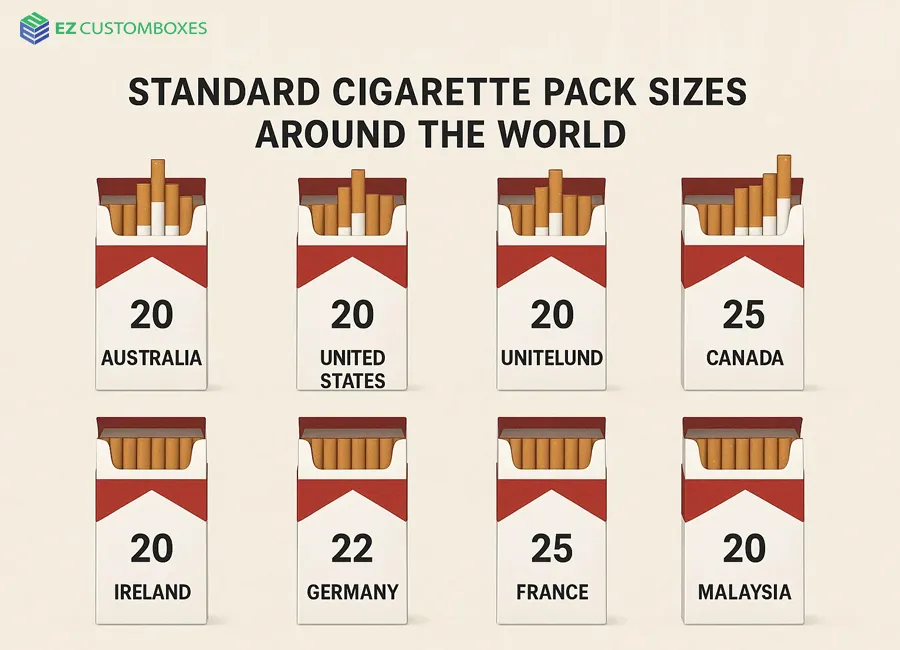
While 20 is the standard, cigarette pack sizes can vary by region, culture, and regulation.
|
Pack Size |
Common Regions |
Description |
|
10 |
Asia, Europe |
Known as “half packs,” ideal for light smokers or budget-conscious buyers |
|
20 |
US, EU, Canada |
Global standard and most commonly sold |
|
25 |
Australia, NZ |
Popular with frequent smokers, offering better value per cigarette |
|
30 |
Select markets |
Bulk option, less common but growing in some regions |
This flexibility allows tobacco companies to target specific market segments — from casual smokers to bulk buyers — while keeping their core packaging format familiar.
Types of Cigarette Packs
Cigarette packaging isn’t just about the number of cigarettes inside — it’s also about the structure and material of the pack. Different pack types offer different levels of protection, aesthetics, and marketing appeal.
1. Soft Pack
A soft cigarette pack is made from thin paper or cardboard. It’s flexible, lightweight, and easy to carry, though less durable than hard packs. Soft packs were once extremely common, especially in the US, and are still used in many markets today. However, their lack of structure means cigarettes are more likely to be crushed.
- Usually contains 20 cigarettes
- Easily fits in pockets
- Less protection against damage
- Minimal branding space
2. Hard Pack
The hard cigarette pack is made from sturdy cardboard or plastic, offering much better protection for the cigarettes inside. Hard packs keep cigarettes fresh for longer, resist crushing, and provide more space for clear branding and health warnings.
Today, hard packs are the most common cigarette packaging format worldwide.
- Standard size for most brands
- Durable and protective
- Excellent branding and labeling
- Usually contains 20 cigarettes
3. Flip-Top Pack
The flip-top pack is a type of hard pack with a hinged lid, introduced in 1915. It’s widely considered the most iconic cigarette packaging design in the world. The flip-top lid helps maintain freshness, prevents spillage, and allows for easy access.
Flip-top packs remain the industry standard, especially for premium cigarette brands.
4. Slide Pack
The slide pack has a drawer-style opening, giving it a sleek and modern look. This type of packaging is often used by premium or luxury cigarette brands aiming to differentiate themselves on retail shelves.
- Elegant and unique design
- Typically holds 20–25 cigarettes
- Adds a sense of exclusivity to the product
Cigarette Pack Dimensions of Popular Brands
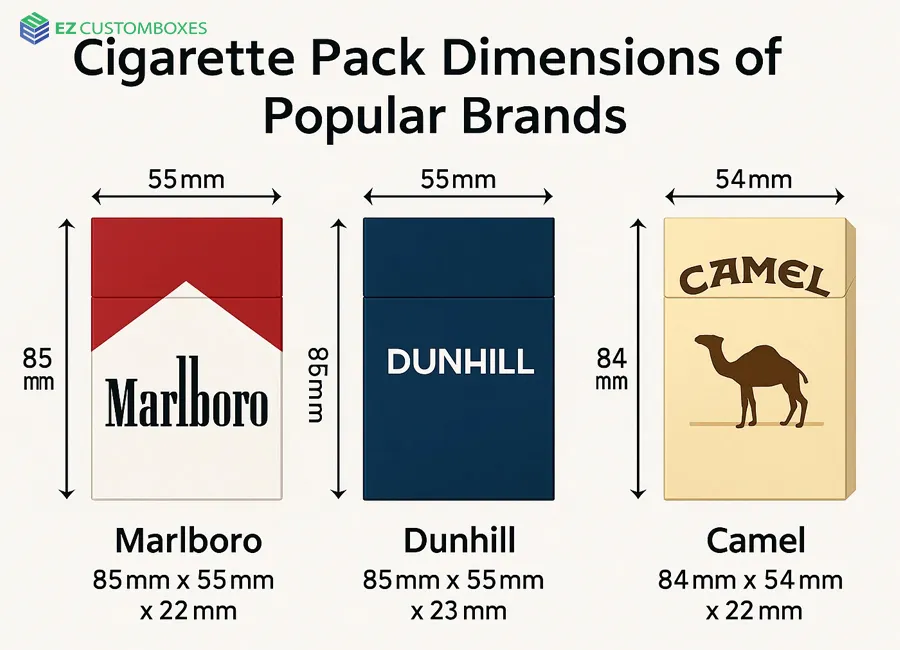
Although the number of cigarettes per pack is often the same, dimensions can vary slightly by brand. These small variations are part of the branding strategy:
|
Brand |
Dimensions (mm) |
Cigarettes per Pack |
|
Marlboro |
85 × 55 × 22 |
20 |
|
Dunhill |
85 × 55 × 23 |
20 |
|
Camel |
84 × 54 × 22 |
20 |
These measurements may look almost identical, but they contribute to each brand’s signature look and feel, making their packs easily recognizable.
Cigarette Cartons and Bulk Packaging
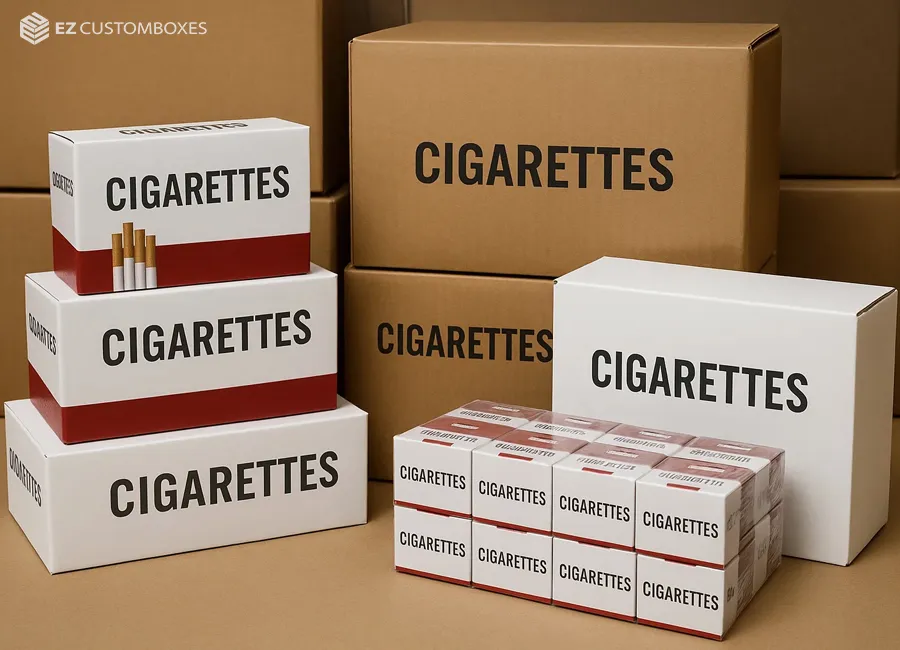
Beyond individual packs, many smokers buy cigarette cartons for convenience and cost savings.
A cigarette carton typically contains:
- 10 packs of cigarettes
- 20 cigarettes per pack
- Total of 200 cigarettes per carton
Cartons are usually cheaper per cigarette compared to buying individual packs, making them a popular choice for regular smokers. Some regions also offer larger bulk packaging for specific brands.
Benefits of buying cartons:
- Cost-effective
- Fewer store visits
- Convenient storage
- Consistent product freshness
Cigarette Pack Pricing and Taxes
Cigarette pricing varies widely depending on brand, region, and taxation policies. In many countries, taxes make up a significant portion of the retail price, and these taxes are often calculated per pack of 20 cigarettes.
|
Pack Size |
Average US Price |
Notes |
|
10 cigarettes |
$3–$6 |
Half pack, limited availability |
|
20 cigarettes |
$5–$10 |
Standard pack |
|
25 cigarettes |
$12–$15 |
Common in Australia |
|
30 cigarettes |
$15+ |
Bulk pricing |
|
Carton (200 cigarettes) |
$50–$120 |
Cost varies by state |
States with higher tobacco taxes (like New York or California) have some of the highest cigarette pack prices in the world, while states with lower taxes offer cheaper options.
Cigarette Packaging Regulations
Cigarette packaging is heavily regulated in most countries, with specific laws controlling what can and cannot appear on the box. These regulations are designed to reduce the appeal of smoking and ensure transparency about health risks.
- Health Warnings: Required in most countries, often covering 50–80% of the pack.
- Standard Sizes: Ensures consistency for pricing and taxation.
- Plain Packaging Laws: Some countries (like Australia and the UK) require plain packs with no logos.
- Barcode and Traceability: Helps authorities track tobacco distribution.
- Display Restrictions: Some regions ban in-store advertising on packs.
These rules are one of the main reasons why 20 cigarettes per pack remains the standard — it fits neatly into existing legal frameworks.
Market Impact of Pack Size and Design
The size and design of a cigarette pack do more than just hold cigarettes. They influence:
- Consumer buying behavior
- Pricing strategies
- Brand positioning
- Regulatory compliance
- Retail visibility
A well-designed, standardized pack helps tobacco companies maintain a consistent identity in a regulated market. Even when plain packaging laws are in place, pack shape and size remain powerful brand cues.
Uncommon Cigarette Pack Sizes
While 20 cigarettes is the standard, some brands and countries offer less common pack sizes to cater to specific audiences:
10-Cigarette Packs
- Known as “half packs”
- Ideal for light smokers or those on a budget
- Popular in parts of Europe and Asia
25-Cigarette Packs
- Common in Australia and New Zealand
- Cater to heavier smokers
- Offer lower cost per cigarette
30-Cigarette Packs
- Less common globally
- Target bulk buyers
- Used in specific markets to increase value per purchase
These variations reflect consumer diversity and market segmentation.
Frequently Asked Questions (FAQs)
Q1: How many cigarettes are in a standard pack?
👉 The standard pack contains 20 cigarettes, the most widely recognized size globally.
Q2: Are 10-pack cigarettes still sold?
👉 Yes, especially in Europe and Asia. They’re often marketed as affordable “half packs.”
Q3: Why are there 20 cigarettes in a pack?
👉 20 is considered the optimal balance between convenience, cost, and daily usage for regular smokers.
Q4: Are 30-cigarette packs common?
👉 Not globally. They’re more common in select countries like Australia, where larger packs are legal.
Q5: How many packs are in a cigarette carton?
👉 A standard carton contains 10 packs of 20 cigarettes each, totaling 200 cigarettes.
Q6: How much does a cigarette pack cost in the US?
👉 Typically between $5 and $10, depending on state taxes and brand.
Q7: Do cigarette packs keep cigarettes fresh?
👉 Yes. Hard packs and flip-top packs help maintain freshness longer than soft packs.
Conclusion
Cigarette packs may seem like a small detail, but they’re the result of over a century of design, regulation, and strategy.
The 20-cigarette pack remains the global standard because it offers convenience, cost efficiency, and regulatory simplicity. But the presence of 10, 25, and 30-cigarette packs in different markets reflects how tobacco companies adapt to consumer preferences and regional laws.
From the early days of loose cigarettes to the iconic flip-top box, cigarette packaging has evolved into a highly standardized system that shapes everything from pricing to branding to public health policy.
Whether you’re a consumer, researcher, or business owner, understanding how many cigarettes are in a pack gives valuable insight into the global tobacco industry.

Ethan Robert works at EZ Custom Boxes as their digital marketing manager. Having a solid background in SEO, content strategy, and eCommerce growth, he specialises in using creative packaging content and data-driven campaigns to drive online visibility and brand interaction.


